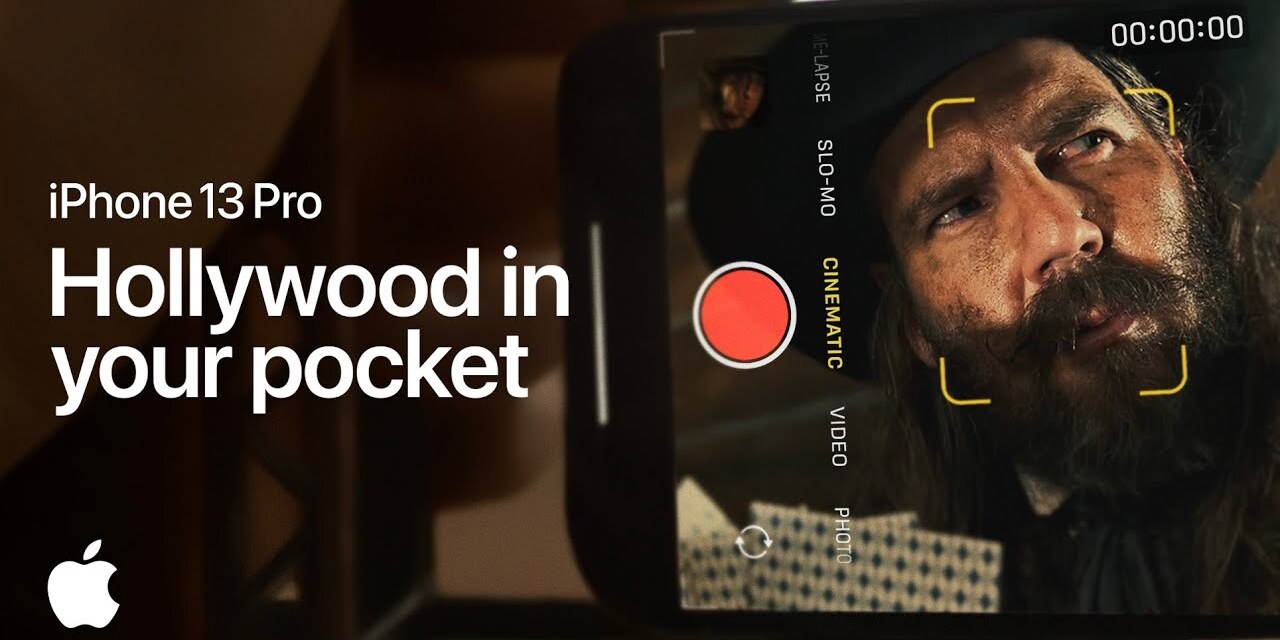Gaming on mobile has never been easier thanks to today’s best florida online casinos.
We’ve all seen ads that make no sense. Maybe their tagline is confusing, the images don’t go together or you simply can’t figure out what they’re trying to sell you. Odds are when you see these attempts and advertising, you might laugh and scratch your head, but I’d bet almost every time you walk away without looking any deeper.You don’t want customers to walk away from you confused about what you do. Let people know exactly what it is you sell, exactly how it can solve their problem and exactly what they need to do to get it. Sounds easy enough, right? But the truth is, crafting effective brand messaging can be tough. So we decided to help you out by outlining the most important aspects of creating clear messaging. Let’s dive in!
First things first: What is brand messaging?
“Say Anything” might be a fantastic ’80s movie, but it’s terrible marketing advice. Without a consistent brand voice, you wind up confusing customers. You want your communication to be clear and consistent across all channels. It also helps you to establish what makes your brand different from competitors and create your own brand personality. Are you an edgy clothing company like Nasty Gal or a classic watch designer like Rolex? Your brand messaging brings your unique position in the market to life.
Solidifying your messaging is important if you want to reach your target audience, but how do you do it? Just as companies will create a brand guide that outlines approved colors and fonts for designs, a brand messaging framework provides a clear picture of how a brand should sound. It’s an easy way to find your tone of voice and keep it consistent across your website, marketing materials, social media and more.
Beyond just the eloquence of your brand, a framework goes deeper into who your brand is right for and what is its unique value. Your messaging can help to inform your brand positioning so customers immediately know who you cater to and how you solve their problems.
It’s also important to understand what is not brand messaging. (This can keep you from diving down the rabbit hole of something that sounds good but won’t help you accomplish your goals.)
- Brand messaging is not random ideas on a whiteboard or sticky notes. It needs to be firmly decided upon and placed in an easily shareable format so the whole team is on the same page.
- Brand messaging is not statements the founder, CEO or president has decided on unilaterally. It’s a collective effort that includes input from key stakeholders and senior leadership. Multiple perspectives are key to creating a brand voice that accurately represents your brand identity.
5 Elements of Effective Brand Messaging
Different marketers and brands may dress up their messaging in different ways, but the most successful ones follow a similar blueprint for communicating with clarity and consistency.
In our process, we help clients determine their differentiators from competitors, brainstorm different customer pain points and find their core message. This sets up our clients to become a successful brand because they’re clearly defining the five most important elements of strong brand messaging.
Positioning Statement
When we talk about positioning your brand, it just means finding the thing you want to be known for. Are you identified by your high-quality products, customer service or unique offerings? To find your brand position, you’ll want to consider the qualities of your brand, the extra mile you travel for customers or the unique viewpoint you bring to the table. These things will set your company apart.
Once you know what makes your brand unique, you can use it to guide your entire marketing strategy. In our messaging workshops, we help brands create a positioning statement that clearly outlines who they are and what solution they’re offering. Think of this as your brand’s elevator pitch: “I’m here, I’m valuable and I want to solve your problem.”
? Want to read more about positioning? Check out: Nike’s Brand Positioning: Just Do It But Differently
Value Proposition
People buy things they think they need. If they can’t identify why they need your product, then they’re not likely to buy it. To establish the relevance of your brand in people’s lives, you have to show them why life without your product just isn’t worth living. (Okay, maybe just more inconvenient.) This is where your value proposition comes in. The proposition tells customers what value you’ll provide and how your products or services will make their life better.
Infomercials can be silly and over the top, but they’re actually a great example of how to translate value propositions into empathy with customers. Take the Smart Spin commercial, for example. It starts with overwhelmed people drowning in a waterfall of storage containers from their cabinets. Then they can’t find a lid in the mess of a drawer. This is the problem: food storage containers are just too hard to organize! Enter the Smart Spin. Their value proposition is clearly demonstrated by showing how clean and organized those same cabinets and drawers are with the Smart Spin technology. The customers are now relaxed, smiling and can easily find what they need. Smart Spin removes the stress of looking for storage containers and keeps your cabinets tidy.
Your value proposition doesn’t have to be demonstrated so dramatically, but it should be included in your marketing messages to clearly communicate how it will improve your customer’s life.
Brand Promise
Every marketing message is making a promise to customers. As Seth Godin points out in his book This Is Marketing, “The promise isn’t the same as a guarantee. It’s more like, ‘If this works for you, you’re going to discover. . .” Your brand promise is similar to a value proposition because it’s another way of telling customers what to expect. Your promise goes a whole lot further than selling points or solving problems, though. A brand promise refers to what you want customers to feel during every interaction with your brand.
Nike is a great example of a brand promise. All of their marketing campaigns, whether it’s commercials, on their website or social media posts, leave customers feeling motivated and energized. Even their tagline, “Just do it,” is empowering! People know when they interact with Nike, they’ll leave with a renewed sense of dedication to their exercise routine.
Godin also states, “Your promise is directly connected to the change you seek to make, and it’s addressed to the people you seek to change.” This leads us into…
Target Audience
A lot of brands make the mistake of trying to make their messaging resonate with everyone instead of someone. “Who is it for?” That’s the basic question you need to answer. You might think you serve all kinds of people, but it’s best to focus on the common problem that you can solve.
You can do this by creating a demographic and psychographic description of your target audience to outline who they are and what they want from your brand. Once you have this, you can tailor your key messages to a specific group instead of trying to reach five different types of buyers.
These don’t need to be super detailed but should give you a clear picture of the people in the group. A lot of marketers are moving away from developing specific personas and instead are looking to a more flexible idea of who the ideal customer is and what appeals to them. Brand consultant, Matt Lerner has a brilliant way of identifying the relevant information you need about your customers:
Imagine you own a beachside restaurant and you’re trying to attract more customers. What information would be more useful?
- Cindy is a 39-year-old mom of two from Atlanta. She’s an accountant who earns $100k a year and votes Democrat in every election.
- Cindy is on a 110-degree beach with two screaming, hungry kids and one of them has to pee.
You can see how the second option gives more relevant information to the immediate situation and what situations would drive customers into a business. It’s the same reason we’re all drawn to gas stations that boast “Clean restrooms!” when we’re on a road trip. When your brand speaks to someone’s immediate problem, they listen.
Tone of Voice
A brand is more than a compilation of colors, fonts and marketing materials. It’s a living thing with purpose and personality. Just like people sometimes have to put on a sequined shirt or dye their hair a crazy color to stand out, your brand has to be unique to be recognizable.
To accomplish distinction, you need to intentionally think about how your brand should sound. What is its voice? No matter what industry you’re in, your brand’s tone of voice should reflect its personality (and yes you need a personality). This could be sleek and professional or quirky and creative — whatever fits who you are and what you do. Having an established tone of voice helps to ensure consistency across your marketing messages and a clear point of view in all of your communications.
Just like Nike has a strong brand promise, Apple has a unique tone of voice that ties perfectly into the experience of their products. They built their brand on simplicity and consistency.
Just look at this iPhone ad from 2021 and this ad for the original iPod from TWENTY YEARS AGO.Also, can we hit pause for a second to appreciate how freaking cool the clicky-dial from the OG iPod was? That thing was so fun to use and Apple should bring it back. Okay, let’s hit play and wrap this up.
More Than a Tagline
As you can see, brand messaging encompasses much more than just a few lines of catchy copy or a generic mission statement on your homepage. It connects to your brand story and has more strategy and intention behind it than most realize. Consumers see “Just Do It” and “Switch to iPhone,” but this fun, bold and compelling external marketing is grounded in thoughtful internal messaging.
Hopefully, we’ve helped you understand the major components of crafting a brand messaging framework that helps everyone on your team get on the same page. But we also know how difficult it can be to follow an outside perspective when you’re trying to focus on the right things and identify key elements within your brand.
It can be challenging to clarify your messaging when you’re so close to your brand. If you need help honing your messaging, you can always reach out to us. Collaborate with our strategists and writers to get a clear brand messaging guide that will help everyone on your team communicate effectively.
? Keep Reading: The Anatomy of a Winning Marketing Message





